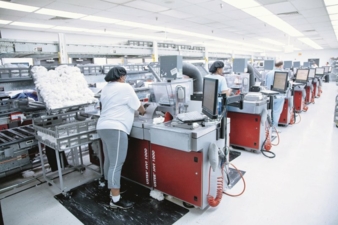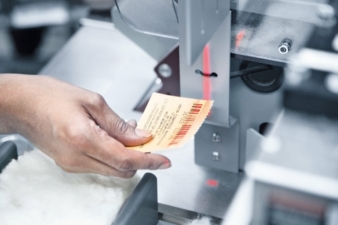27/04/2022 – Cotton — auf Deutsch lesen
Good fiber, good yarn, good business
Purchasers of raw cotton must focus on the price, but even mor so on the fiber quality. Why is cotton quality data so extremely crucial?
Cotton isn’t just cotton. It’s a totally natural product, so cotton fibers can vary a lot. The differences between cottons depend on many factors – including where and how it grows. It follows that yarns made from cotton can also show widely different properties. That’s why purchasers of raw cotton must focus on the fiber quality as well as the price. And why the world’s cotton classing offices are vital in determining the key quality information needed for successful textile production.
Each cotton fiber is just a single plant hair. And each hair is a single cell, developed from the surface of a cotton seed – one of as many as 10,000 to 20,000 per seed. It’s these seed hairs which have the special properties which make cotton uniquely useful. More than any other plant, they have ideal characteristics of length, strength, color and structure – perfect for many applications in textiles.
Cotton quality parameters
Staple length refers to the average length of the fibers. Long-staple cotton makes stronger yarns, especially in fine counts, as there are fewer fibers in a given length of yarn. That means more points of contact between fibers when twisted together in spinning.
Fiber strength is largely determined by genetics, so cotton variety plays an important role in this fiber quality. Growth environment and crop management also play a huge role in determining fiber strength. This combination of factors contributes to the quality of the crop, and growers will seek to replicate it, season after season.
The micronaire value is a measurement of fiber fineness and maturity. It gives important information about the dyeing characteristics of cotton products produced from a fiber. Uneven distribution of micronaire within a fabric can result in poor color uniformity and problems such as barré (repeating streaks).
Thanks to the wide range of testing instruments and computer-aided systems, today’s quality assurance data can include numerous quality characteristics. There are well over 150 parameters to describe the quality of a fiber or a yarn.
Cotton quality for spinning
Fine, long, and strong fibers allow a mill to produce finer, stronger, uniform yarn. They also usually result in higher spinning efficiencies. The priority order of the main fiber properties varies depending on the spinning technology (ring, rotor or air-jet). However, the length, length uniformity, strength, and fineness always play a major role.
Fiber quality determines the quality of the end-product and impacts on the productivity and efficiency of the spinning mill. This makes the management of the raw cotton supply a critical element in yarn manufacturing. Choosing the appropriate cotton quality at the right price is crucial to mill profitability.
Cotton quality for trading
Raw material is the highest single cost (over 50%) in yarn manufacturing. Therefore, cost is naturally a prime consideration in raw cotton purchasing – but fiber quality is also vital in assessing whether the price paid is good value or not. These costs clearly need to be controlled on the basis of reliable, objective data from systematic testing processes.
That’s where cotton classing offices have an important role. Cotton classification refers to the application of official standards and procedures developed by cotton classing offices for measuring the physical attributes of raw cotton. Major cotton growing countries all have their national cotton classing offices: USDA (USA), CFIB (China), SIFAT (Uzbekistan) and PCSI (Pakistan). Fiber properties are determined through a combination of test evaluations, using High Volume Instrument (HVI) technology from Uster, and are graded by a skilled cotton classer.
Cotton prices are determined by the traditional ‘open outcry’ method in trading pits, or by public auction over computer networks. As a consequence, there is no judgment involved in reporting prices. On the other hand, futures prices are very specific to the type, quality, location and time of delivery. Some directions are found in the Cotlook A Index, which is intended to be representative of price levels on the international raw cotton market.
Cotton quality through automated classing
Today, precision instruments are used to perform quality measurements in a matter of seconds, whereas original classification systems were inefficient and relied on human expertise.
The solution for reliable automated cotton quality control was introduced in 1969: the Uster high volume instrument (HVI) has evolved into the world reference for cotton classification. More than 2,300 HVI units are installed in 70 countries. Over half of all cotton produced worldwide is classed by Uster instruments – and 95% of all classed cotton has been measured by Uster instruments.
Testing can be completed in seconds, by only one operator. The latest model HVI 1000 rapidly provides full reports on 11 important quality characteristics, even using automatic bale tag barcode IDs.





